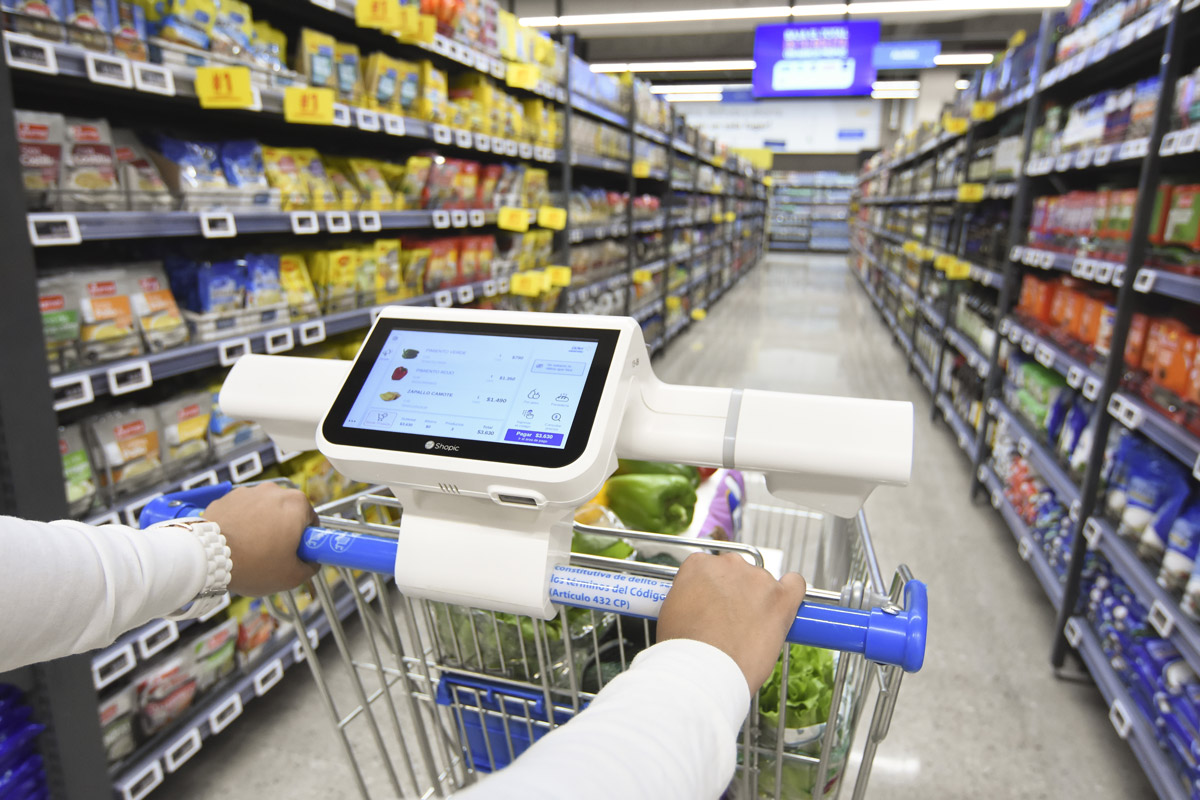
Marcel Goic, a researcher at the MIPP Millennium Institute, predicts that digital channels will continue to consolidate and artificial intelligence (AI) initiatives will continue to be incorporated into a wide variety of processes.
The consolidation of self-service checkouts and improvements in dispatch services, which have led to significant reductions in service times, are from the customers’ point of view the most easily observable technologies that the retail industry has introduced in recent years in Chile.
Marcel Goic points out that many benefits of the incorporation of new technologies in this industry occur in internal processes, so they are not tangible for the end customer, but have a direct impact on service.
“For example, the introduction of better demand forecasting has had an impact on reducing stock-outs in stores, robotic inspection of planograms has improved the execution of priced strapping, and personalization systems have made it possible to provide customized assortments on e-commerce sites”
As with other activities, the outbreak of the pandemic accelerated a series of transformations in the retail industry that had already been in the pipeline for some time.
“For example, the consolidation of digital channels, the emergence of gray stores that combine physical sales with online fulfillment and the proliferation of an ecosystem of solutions that allow integration with traditional purchasing processes, including last-mile suppliers and in-store purchasing outsourcing systems, to mention the most visible”
The constant search for improvements in the supply chain – to reduce time, inventory and costs – and the development of digital channels – which had a steady growth during the last 10 years – are key activities of the retail industry that have been automated.
“Interestingly, these two lines have met in recent years in the development of omni-channel initiatives, where digital channels have needed to be integrated into distribution systems,” Goic explains.
In his opinion, the retail industry in our country is very competitive and, therefore, has been forced to incorporate new technologies. “Having said that, I think these processes are rather reactive, and mainly motivated by direct cost reductions.”
When talking about the main transformations that the retail industry has undergone in recent years due to the inclusion of new technologies, it is often believed that these changes have allowed companies to optimize the way they work rather than improve interaction with the end consumer.
In this regard, Marcel Goic argues that an important part of the improvements are developed in internal processes, but these do have visible impacts on service, such as better availability of products, better execution of the cellar and reduction in delivery times.
Some people in the industry maintain that we are on the verge of significant changes in the operation of stores, especially due to the advance of artificial intelligence (AI) tools. For the MIPP Millennium Institute researcher, digital channels will continue to consolidate and artificial intelligence initiatives will continue to be incorporated into a wide variety of processes.
“However, we still have a long way to go before we can have highly automated stores. The complexity of in-store processes is still too high to be able to automate massively at economically attractive costs”
One of the great challenges facing the retail industry is that consumers today are looking for more than just the product and expect a shopping experience where the sensory (the physical store), the digital (smartphones) and the social (social networks) are intermingled throughout the shopping process.
“First -he points out- I think it’s important to note that consumers are heterogeneous in what we look for in shopping experiences. In this sense, I would say that the existence of efficient digital channels has driven us to have distinctive in-store experiences, and there are still a variety of situations where we still look for simplicity and efficiency in shopping.”
He adds: “In this sense, the important thing is to identify the use cases where each component brings value to the customer. So, it seems to me that retailers should provide a flexible environment so that customers can choose the combination of channels that is most convenient for them”.
The retail industry will need to continue to incorporate new technologies. “Leaving aside the more exclusive product markets, the logic of this industry requires having products available at the point of sale in a very efficient way. To compete in this environment, technology has played a fundamental role,” says Marcel Goic.
Therefore, he emphasizes that players who are not up to industry standards simply cannot compete. “In this logic, I think there is room for the big players to not only adopt reactively, but to invest in research and development to take leadership positions. Retailers that were born digital, such as Amazon or Mercado Libre, have set the tone in this direction,” he concludes.
MIPP Chile 2024